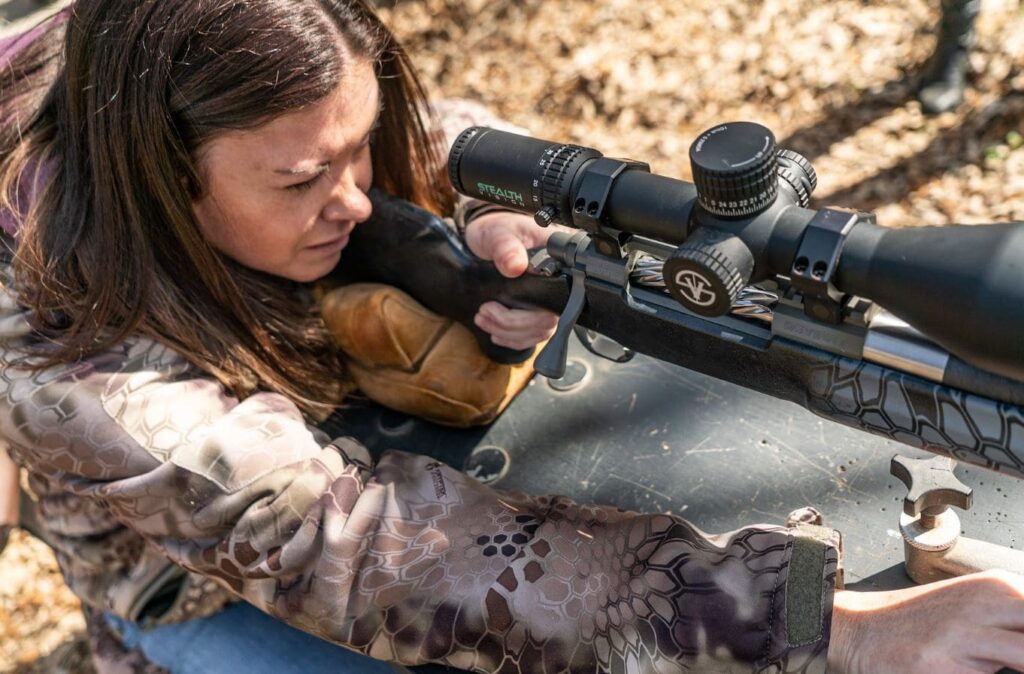News
What is Spin Drift?
If you’re a seasoned long-range shooter, the odds are that you know the effects of wind, air resistance (drag), and gravity on a bullet’s trajectory.
Indeed, the market is inundated with ballistics programs to enable you to calculate how much of an effect drag, wind, and gravity have on your bullet’s path.
While gravity, wind, and drag are the main elements affecting a bullet’s trajectory, they aren’t the only forces.
In this post, we’ll explore other subtle elements that influence the bullet path. More specifically, we’ll talk about spin drift and Coriolis accelerations.
But first,
Why is Spin Drift Important?
Many long-range shooters don’t understand spin drift, also known as Gyroscopic drift, and Coriolis acceleration. Why? …because their effects are negligible to a bullet’s trajectory than other factors such as wind, temperature, gravity, etc.
Further, the theory behind the two dynamics is complex and can be difficult to understand. Negligible or not, difficult to understand or not, these elements affect the path bullets take predictably.
The subject of this post is to explain these forces, their effects on bullet trajectory, and what you can do correctly to predict and correct them.
Let’s dive right in;
What is Spin Drift?
Let’s examine a few facts about a spinning object for a second to understand spin drift.
Think of a spinning object like a top or bullet. The object has a “spin axis” on which it rotates. If you interrupt this spin axis using force, the object will react unusually.
Instead of edging toward the direction you push it, the axis reacts by moving 90° away from the applied force in the direction of rotation.
So, if you have a top spinning in the clockwise direction on a surface in front of you, say a table or floor, and you push its stem away from you, the stem’s initial response is to move to the right. It’ll then adjust to its new equilibrium.
Now, let’s flip the script and talk about bullets.
Think of a bullet fired at a particular angle over a long-distance trajectory. The bullet begins by spinning on its axis lined up with its velocity vector.
As the trajectory advances, gravity moves the bullet down, introducing an element of velocity toward the ground.
We can compare the bullet’s reaction to a spiraling football on a long pass, following the velocity vector, which in this case is a nose-down torque.
By torquing on the axis or rotation, the bullet edges slightly to the right as it traces the velocity vector. This slight movement to the right results in a lateral drift known as spin drift.
The direction of gyroscopic drift can change to left or right depending on your barrel’s twist.
Bullets shot from the left barrels drift to the left and vice versa by the same margin, typically 8 to 9 inches over 1,000 yards.
Spindrift is an interaction between the bullet mass and the air around the bullet’s flight path. It depends on air density and has nothing to do with the earth’s rotation.
Coriolis Acceleration
While spin drift and Coriolis effects are independent, you can’t talk about one without the other.
Coriolis accelerations are caused by the earth’s rotation and may vary depending on your location and firing direction.
Coriolis comprises vertical and horizontal elements.
Your latitude —how far you are below or above the equator – determines the horizontal Coriolis elements. The horizontal effect is optimal at the poles and minimal at the equator.
The standard horizontal Coriolis drift for bullets shot from small arms at 45° North Latitude is about 2.5 to 3 inches to the right over 1,000 yards.
The vertical component, on the other hand, depends on your shooting direction and your location. Shooting South or North causes no vertical deflection. Shooting West should hit high, and East enables (causes) you to hit low.
The vertical component is optimal at the equator and minimal as you move to the poles. The standard vertical deflection at 45° degrees North or South latitude over a distance of 1,000 yards equals the horizontal component — +2.5 to 3.0″ when shooting East or -2.5 to 3.0″ when shooting West over 1,000 yards.
What Does Spin Drift and Coriolis Effects Mean for Long Range Shooting?
To determine how spindrift and Coriolis affect long-range shooting, you must understand the following:
The Coriolis effect and spin drift are independent and cumulative.
For instance, if you’re shooting a gun in the northern hemisphere and are using a right twist barrel, the spin drift will drive your bullet about 9” to the right at 1,000 yards. The Coriolis effect will move the bullet a further 2.5”, causing an 11.5” right drift when there’s no crosswind.
Conversely, the spindrift and the Coriolis drift would partially cancel out, causing a 6.5 right drift if you’re shooting in the northern hemisphere.
What does this mean if you’re a competitive shooter?
If you’re a long-range shooter, you’re likely to set a zero-wind value on your sights for reference. If you’re determining this zero-wind setting for a 100-yard zero, your accuracy will be off for longer ranges.
The difference between right and left twist barrels in long ranges means the no wind zero will be off by 0.5 or 1 MOA due to the cumulative effects of spin drift and Coriolis drift.
With that in mind, it would be best to use a left twist barrel if you’re shooting in the northern hemisphere.
Side Note: Coriolis accelerations may vary depending on your firing direction and location. Also, spin drift may differ from one bullet to another, as shown in the table below.
Note: The spindrift is based over 1,000 yards.


